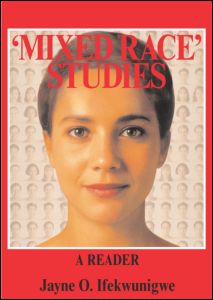Ethnicity and family – Relationships within and between ethnic groups: An analysis using the Labour Force Survey
Equality and Human Rights Commission
2009-01-19
Lucinda Platt, Professor of Sociology
Institute of Education, University of London
This paper outlines the ethnic composition of families in Britain today using the Labour Force Survey household data. That is, it explores whether adults from different ethnic groups are living with someone from the same ethnic group (co-ethnic or ‘same race’ partnerships) or are living with someone from a different ethnic group (inter-ethnic or mixed race’ partnerships), or are living on their own. It also looks at the experience of children living with parents of the same or different ethnic groups (to each other and to the child). Given the growth of those defining themselves in terms of mixed or multiple ethnicities, the prevalence of adults and children of mixed ethnicity is also summarised. Religious affiliation as well as ethnicity may also be a point of similarity or difference within couples. The report also considers the extent to which men and women of different religious affiliations are in co-religionist and interreligionist partnerships. Finally, some indication of trends is given by comparison with earlier analyses of family composition and ethnic group…
Read the entire report here.
…However, if we start to look across generations there are indications of change and increases in diversity of the population. Almost 20 per cent (or one in five) children under 16 were from minority groups, and nearly 3 per cent of children under 16 were from one of the mixed ethnicity groups. Around 9 per cent of children were living in families which contained mixed or multiple heritages. While population ageing is the story for the majority, the minority groups tend to be younger. This is particularly true for the mixed groups . The majority of mixed ethnicity children are under 16. Half of the White British group are over 40 and half are under 40, but the median age for all the minority groups is younger than this. Half of Caribbeans are under the age of 36, for Indians the median age is 33, it is 32 for Chinese, 26 for Black Africans, 24 for Pakistanis and half of Bangladeshis in Great Britain are aged 21 or under. Conversely, nearly a quarter of White British are aged 60 or more, but only 16 per cent of Black Caribbeans, 11 per cent of Indians and fewer than 10 per cent of the other minority groups are (with the exception of the Other White group). This suggests that minorities will make up a larger proportion of the population in the future, and the numerical significance of those claiming a mixed or multiple heritage in particular is set to increase if current trends continue…
…The analysis showed that overall these expectations were fulfilled. Rates of inter-ethnic partnership were lower among the majority White population (three per cent for men and four per cent for women) than among minorities
(where they ranged among couples from the non-mixed groups between seven per cent for Bangladeshi men, to 48 per cent of Caribbean men, and between five per cent of Bangladeshi women, to 39 per cent of Chinese women). Those groups, such as Pakistanis and Bangladeshis which tend to be more geographically concentrated had lower rates of inter-ethnic partnership (seven and eight per cent among men and five and six per cent among women) than more geographically dispersed groups such as Chinese (17 per cent among men and 39 per cent among women in couples), or Black Caribbeans (48 per cent among men and 34 per cent among women). Pakistanis and Bangladeshis are also those which tend to be the most economically marginalised of the minority groups, which could also have been reflected in their lower rates of inter-ethnic partnerships…
…At the other end of the spectrum, Black Caribbean men and women were the most likely of any group to be in an inter-ethnic partnership (48 per cent of men and 34 percent of women in couples were in an inter-ethnic partnership); and this increased between first and second (or subsequent) generations and between older and younger men and women. Rates were also higher among couples with children. For 55 per cent of Caribbean men living with a partner and children under 16, and 40 per cent of Caribbean women, that partner was from a different ethnic group. It therefore appears a trend that is set to continue and that will result in an increasing number of people with diverse identities of which Caribbean heritage forms a part…
Read the entire report here.
